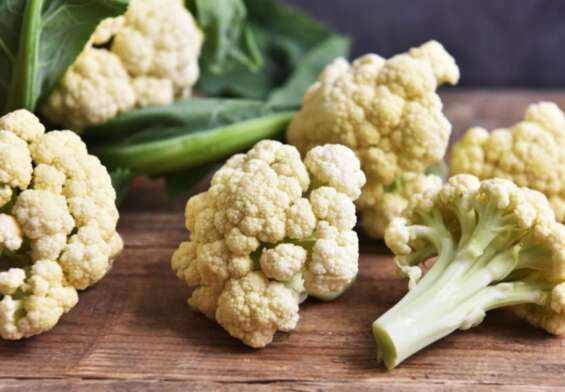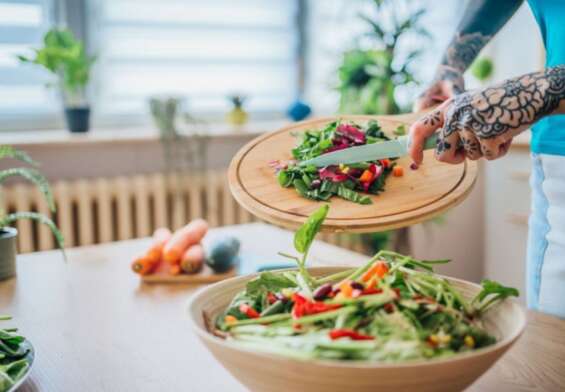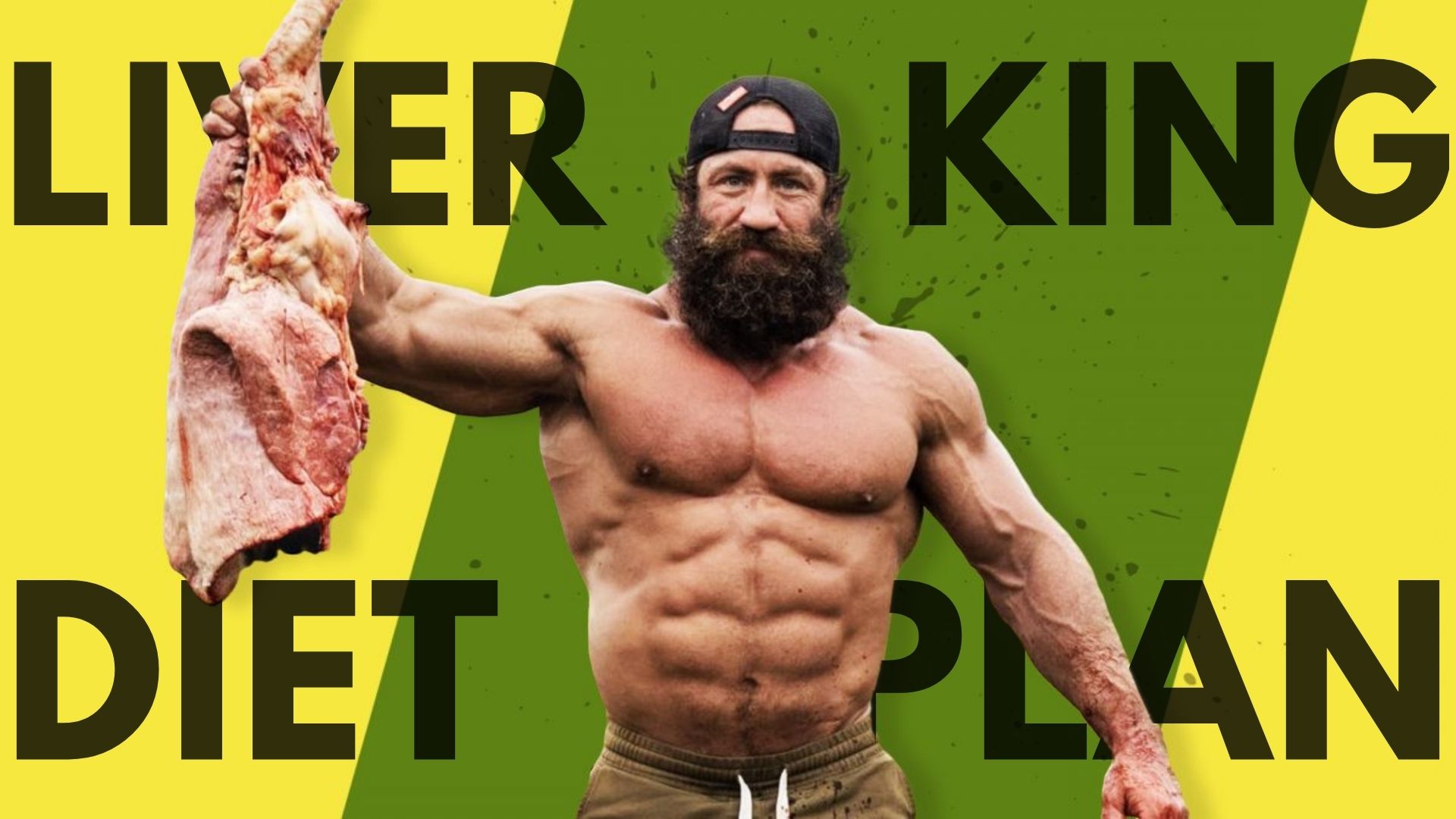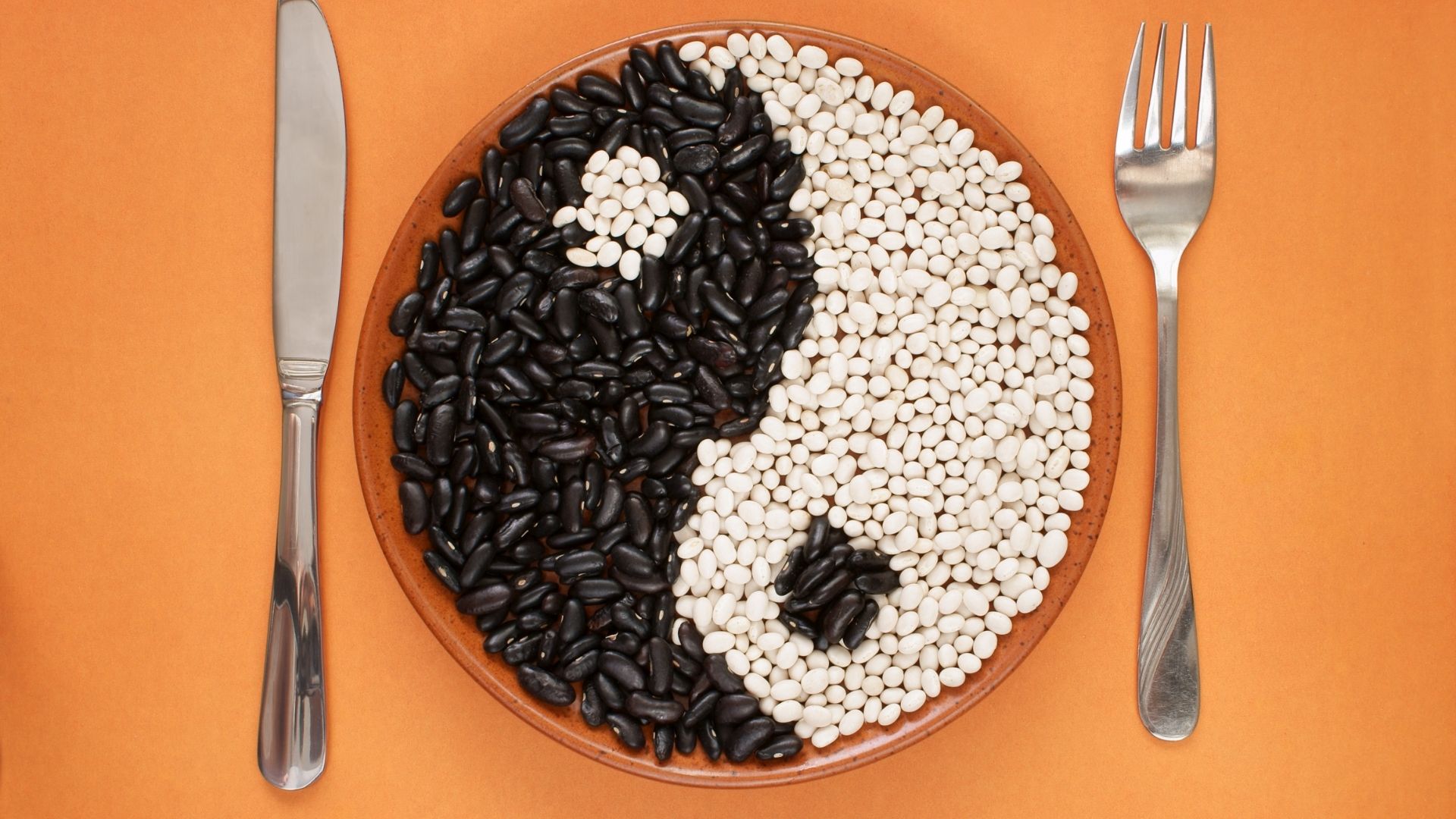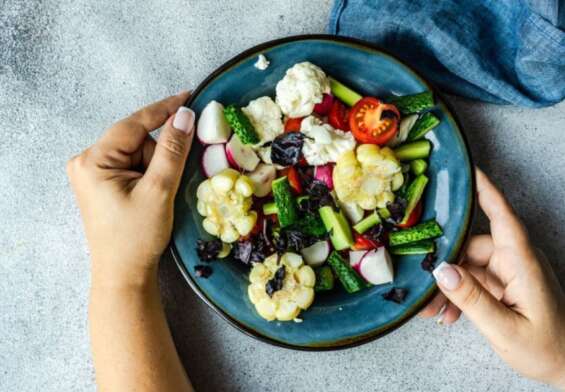
Lacto Vegetarianism Diet: A Vegetarian Diet Without Eggs
Lacto vegetarianism is a type of vegetarian diet that excludes meat, fish, and eggs, while allowing dairy products such as milk, cheese, and yogurt. This diet is often chosen for its health benefits, including a reduced risk of heart disease, diabetes, and some cancers. It’s also considered to be an environmentally friendly dietary choice, as it reduces the amount of animal products consumed. By following a lacto vegetarian diet, you’ll be able to enjoy a wide variety of delicious and nutritious plant-based foods.
Exploring the Benefits of a Lacto-Vegetarian Diet
Are you ready to explore the benefits of a lacto-vegetarian diet? Hold onto your veggie burgers, folks, because we’re about to embark on an exciting journey!
It’s no secret that a lacto-vegetarian diet is packed with benefits. For starters, it’s rich in fiber and plant-based proteins, which can help keep you feeling full and energized throughout the day. Additionally, consuming fewer animal products can help reduce your environmental footprint. And let’s not forget the amazing array of fresh fruits, veggies, and legumes that you can enjoy on this diet!
But the benefits don’t stop there. Studies have shown that people who follow a lacto-vegetarian diet may have a lower risk of certain chronic diseases, such as obesity and heart disease. And if you’re looking to save some cash, this diet is definitely the way to go. You can usually find plant-based proteins and other items for less than the cost of animal-based products.
So, if you’re looking for a tasty and nutritious way to get healthy and help the planet, a lacto- vegetarian diet may be just what you need. Bon appetit!
Meal Planning Strategies for a Lacto-Vegetarian Diet
Prepare to be creative! A lacto-vegetarian diet can be flavorful and exciting if you’re willing to get creative in the kitchen. You can get started by trying out new recipes, experimenting with different spices and flavors, and trying out new ingredients.
Get organized. Meal planning and prepping ahead of time can help you stay on track with your lacto-vegetarian diet. Make sure to plan out your meals for the week and prepare ingredients ahead of time so you can whip up delicious and nutritious meals in no time.
Befriend legumes. Legumes are an excellent source of protein and can be used to make a variety of dishes. From soups and stews to burgers and burritos, you can use legumes in almost any recipe.
Have fun with grains. Grains are an important part of a lacto-vegetarian diet as they provide essential nutrients, fiber, and protein. From breakfast bowls and salads to stir-fries and casseroles, grains are a great way to add flavor and texture to your dishes.
Get saucy. To add flavor and variety, try out different sauces and dressings. From creamy alfredo to tangy tahini, sauces and dressings are an easy way to make a simple dish into something special.
Don’t forget your greens. Greens are an essential part of a lacto-vegetarian diet and can be added to almost any dish. You can add them to salads, soups, stir-fries, and grain bowls to add flavor, texture, and nutrition.
Get creative with plant-based proteins. Plant-based proteins such as tofu, tempeh, and seitan are excellent sources of protein and can be used in a variety of dishes. From tacos and burritos to stir-fries and casseroles, plant-based proteins are a great way to add flavor and nutrition to your meals.
Enjoy the treats. Just because you’re eating a lacto-vegetarian diet doesn’t mean you can’t indulge in a few treats. From vegan ice cream to cookies and brownies, there are plenty of delicious vegan treats that you can enjoy.
Have fun! Eating a lacto-vegetarian diet doesn’t have to be boring or restrictive. So have fun in the kitchen and enjoy experimenting with new recipes and flavors. Who knows, you might even discover a few new favorites!
How to Meet Your Protein Requirements on a Lacto-Vegetarian Diet
Wondering how to get enough protein on a lacto-vegetarian diet? Don’t worry—it’s easier than you think! With the help of some creative recipes and a few protein-packed staples, you can meet your protein needs without meat. Here are a few fun and delicious ways to do it:
Say cheese! Cheese is a great source of protein, and there are so many different kinds to choose from. Try sprinkling feta on your salad, adding cheddar to your tacos, or making a creamy mac and cheese. Yum!
Get your grains. Quinoa, bulgur, and buckwheat are all excellent sources of protein. Try making a quinoa bowl with roasted veggies and a sprinkle of cheese, or try a buckwheat pancake for breakfast.
Go nuts! Nuts and nut butters are an easy way to add protein to your diet. Make a delicious almond butter and jelly sandwich, or whip up a batch of homemade trail mix.
Get your greens. Leafy greens like kale, spinach, and Swiss chard are high in protein. Try adding them to your smoothies, sautéing them in olive oil, or baking them into a cheesy pizza crust.
Have an egg-cellent day. Eggs are a great source of protein and a versatile addition to any meal. Scramble them up for breakfast, make an omelette for lunch, or bake them into a quiche for dinner.
With these delicious ideas, you’ll be well on your way to meeting your protein needs on a lacto-vegetarian diet. Bon appétit!
Introducing Your Family to a Lacto-Vegetarian Diet
Welcome to the wonderful world of being a lacto-vegetarian! You may have heard it’s a healthier and more sustainable way of living, but what you may not have heard is that it can also be delicious and fun! So, let’s get started on introducing your family to this new way of eating.
First things first, you’ll need to stock up on some of the basics. Vegetables, fruits, grains, beans, nuts, and dairy are all staples of the lacto-vegetarian diet. Don’t forget to include some “faux-meats” like veggie burgers, seitan, and tofu, too!
Now that you’ve got the pantry stocked, it’s time to start cooking. But don’t worry, you don’t have to be a master chef to make some delicious lacto-vegetarian dishes. Start with some easy recipes like a veggie stir-fry or a black bean burrito. You can even make pizza with a cauliflower crust!
For breakfast, why not try some vegan pancakes or a veggie omelet? And for lunch, why not try a veggie wrap or a tofu sandwich? And don’t forget about dinner! Who doesn’t love a big bowl of veggie chili or a veggie lasagna?
To make the transition a little easier, try to incorporate some of your family’s favorite dishes. Just replace the meat with some delicious vegan alternatives. You’d be surprised how easy it can be to make a vegan version of your favorite meals.
The most important thing is to make sure everyone is having fun! Don’t worry if you make a mistake or if it takes a few tries to get it right. Lacto-vegetarianism is all about eating healthy and delicious food, so don’t be afraid to experiment.
So, don’t be intimidated by the thought of making the switch to a lacto-vegetarian diet. It can be a fun and delicious way of eating that benefits both you and the planet. And remember, you don’t have to be a master chef to make some tasty meals. So get cooking and have fun!
Tips for Transitioning to a Lacto-Vegetarian Diet
- Take the plunge – Going cold turkey is the best way to transition to a lacto-vegetarian diet. You won’t miss the meat if it’s not there!
- Go nuts for nuts – The protein and healthy fats found in nuts and nut butters will keep you full and satisfied. Almonds, cashews, and walnuts are great sources of protein and healthy fats.
- Get to know your grains – Whole grains like quinoa and brown rice are essential for a balanced vegetarian diet. They’re packed with fiber and essential vitamins and minerals.
- Experiment with new spices – Add some variety to your meals by experimenting with different spices. From curry to cumin, you’ll find plenty of flavors to explore.
- Get creative with veggies – Vegetables are an important part of a healthy vegetarian diet. Try out different recipes and combinations to keep meals exciting and flavorful.
- Don’t fear the dairy – Dairy products like cheese, yogurt, and milk can provide an array of essential nutrients. Just make sure to choose low-fat varieties when possible.
- Make friends with beans – Beans are a vegetarian’s best friend. From black beans to chickpeas, they’re an excellent source of protein and fiber.
- Embrace vegan substitutes – If you’re missing the taste of certain foods, vegan alternatives can help you satisfy your cravings. Try out vegan burgers and cheese to get your fix.
- Go green – Leafy greens like spinach and kale are superfoods that are packed with nutrients. Add them to salads, soups, and smoothies for a nutrient boost.
- Don’t forget to treat yourself – Treat yourself to some vegetarian-friendly snacks every once in a while. Dark chocolate, popcorn, and fruit are all great options.
What to Eat for Breakfast on a Lacto-Vegetarian Diet
Start your day with a surprisingly delicious and nutritious breakfast that fits perfectly into a lacto-vegetarian diet! To make it even more fun, why not give it a creative name like “Tofu-Wich”. Here’s how you make it:
- Start by lightly sautéing some extra firm tofu in a skillet with a little olive oil, garlic, and onion.
- Toast a whole wheat English muffin and spread it with hummus.
- Place the cooked tofu on top of the hummus, add some thinly sliced tomato, and top it with a sprinkle of nutritional yeast.
- Enjoy your “Tofu-Wich” for a tasty, protein-packed breakfast!
Sample Meal Plans for a Lacto-Vegetarian Diet
Meal plan #1
Breakfast: Start your day with a delicious bowl of oatmeal topped with your favorite fruits and nuts.
Lunch: Enjoy a hearty salad with grilled veggies, quinoa, and a zesty lemon vinaigrette.
Snack: Get your snack fix with some hummus and veggie sticks.
Dinner: Dig into a tasty veggie stir fry with brown rice and a side of steamed broccoli.
Meal plan #2
Breakfast: Treat yourself to a yummy smoothie bowl with almond milk, banana, berries, and some chia seeds.
Lunch: Whip up a veggie-packed wrap with hummus, spinach, and avocado.
Snack: Munch on some crunchy roasted chickpeas for an afternoon pick-me-up.
Dinner: Enjoy a veggie-filled pasta dish with a creamy vegan Alfredo sauce.
Shopping List Essentials for a Lacto-Vegetarian Diet
Ready to live the lacto-vegetarian dream? Here’s your shopping list of essentials to get started:
A variety of fresh vegetables – you can never have too many! Choose from leafy greens (spinach, kale, arugula, etc.), root vegetables (carrots, radishes, beets, etc.), and everything in between.
Plant-based proteins – think lentils, beans, tofu, tempeh, and more. Get creative and explore all the delicious options out there.
Dairy products – cheese, yogurt, and milk are all great sources of calcium and other important nutrients. Look for those products made without animal products.
Plant-based oils – olive oil, coconut oil, and avocado oil are all great options for cooking and adding flavor to your meals.
Nuts and seeds – these are excellent sources of protein and healthy fats. Stock up on your favorites, including almonds, cashews, walnuts, sesame seeds, and more.
Grains – rice, quinoa, oats, and other whole grains are perfect for adding bulk to meals and providing a healthy dose of fiber and other important nutrients.
Spices – don’t forget to add flavor to your meals! Stock up on a variety of spices, including cumin, turmeric, garlic powder, and more.
Now you have everything you need to start living the lacto-vegetarian life! Bon appétit!
Dairy Alternatives for a Lacto-Vegetarian Diet
If you’re a lacto-vegetarian looking to add some variety to your diet, there are plenty of non-dairy alternatives to try!
For a creamy, cheesy flavor, you can’t go wrong with vegan cheese. It’s made with a variety of plant-based ingredients, like nuts, seeds, and legumes, so you can enjoy all the flavor without the dairy.
If you’re a yogurt fan, don’t worry – there’s a vegan option for you too! Coconut milk and almond milk yogurts are both great alternatives. And if you’re looking for a more traditional yogurt flavor, you can find vegan varieties made with soy, cashew, and even hemp milk.
If you’re looking for a milk-like beverage, you can try oat milk, soy milk, almond milk, or even hemp milk. All of these options are creamy and delicious, so you won’t have to miss out on your morning coffee!
And if you’re craving something sweet, try vegan ice cream! There are plenty of plant-based ice cream options available, made with coconut milk, cashew milk, and almond milk.
So don’t worry, you don’t have to give up all of your favorite dairy-based treats to stick to your lacto-vegetarian diet – there are plenty of delicious alternatives out there!
Lacto-Vegetarian Recipes for a Healthy, Balanced Diet
Veggie-Packed Quesadillas: Who said vegetarian diets have to be boring? Spice up your lunch or dinner with these flavor-packed quesadillas. Start by heating a large skillet over medium-high heat, and adding a tablespoon of olive oil. Throw in some chopped onion, bell pepper, and jalapeno, and sauté until the vegetables are lightly browned. Add some grated cheese and a can of black beans, and cook until the cheese is melted. Then, place a flour tortilla in the skillet and add the veggie-bean-cheese mixture. Top with another tortilla, and cook until lightly browned. Cut into wedges and enjoy!
Veggie-Taco Salad: Taco Tuesday just got a lot healthier! Start with a bed of fresh lettuce, then top with black beans, corn, tomatoes, and some crumbled cheese. For a kick of flavor, add some diced jalapeno. For the dressing, mix together plain yogurt, lime juice, cumin, and garlic powder. Drizzle the dressing over the salad and serve with a side of baked tortilla chips.
Roasted Veggies and Hummus: This is a great snack that packs plenty of nutrients. Preheat the oven to 425 degrees, and spread a sheet of parchment paper on a baking sheet. Arrange some sliced carrots, broccoli, cauliflower, and zucchini on the sheet. Drizzle with olive oil and sprinkle with salt and pepper. Bake in the oven for 15 minutes until the vegetables are cooked through and lightly browned. Serve with a side of hummus or your favorite dip.
Veggie-Filled Frittata: This dish is perfect for brunch or dinner! Preheat the oven to 375 degrees. In a large bowl, mix together some beaten eggs, chopped vegetables (such as bell peppers, mushrooms, and spinach), and grated cheese. Spread the mixture in a greased baking dish, and bake for 25 minutes until the eggs are set. Enjoy with a side of toast and fresh fruit.
Veggie-Stuffed Portobello Mushrooms: These are a great main course for a vegetarian meal. Preheat the oven to 350 degrees. Remove the stems from four portobello mushrooms, and scrape out the gills on the underside. Place the mushrooms in a baking dish, and fill with a mixture of cooked quinoa, chopped vegetables, and grated cheese. Drizzle with olive oil and bake for 20 minutes until the cheese is melted and the mushrooms are cooked through. Serve with a side salad and enjoy!
The Difference Between Lacto-Vegetarian and Vegan Diets
Are you a lacto-vegetarian or vegan? It may have never crossed your mind, but there are actually some subtle differences between the two diets!
First, let’s start with the similarities. Both diets exclude the consumption of any animal products, such as meat, poultry, fish, eggs, and dairy. So, if you’re a lacto-vegetarian or vegan, you’re already off to a great start in terms of living a more sustainable lifestyle!
But, the difference lies in what each diet permits. A lacto-vegetarian diet allows for the consumption of dairy products such as milk, cheese, and yogurt. Vegans, on the other hand, avoid all animal-derived products, including dairy.
So, if you’re a lacto-vegetarian, you can enjoy all the delicious, creamy cheese you want! On the other hand, vegans have to get a little more creative with their dishes. Despite the lack of cheese, there are still plenty of vegan-friendly options out there, such as vegan-friendly cheeses made from non-dairy sources.
At the end of the day, it doesn’t matter which diet you choose—both are great options for those looking to reduce their environmental impact and promote a more plant-based lifestyle! Whether you’re a lacto-vegetarian or vegan, you can still enjoy delicious meals and snacks.
Conclusion
Lacto vegetarianism is an effective and healthy way to eat for people who are looking to increase the amount of plant-based foods in their diet. It allows for a wide variety of foods, including dairy and plant-based proteins, to be included in meals. It also offers numerous health benefits, such as reducing the risk of certain chronic diseases, improving digestive health, and helping to maintain a healthy weight. With its numerous benefits and variety of foods, lacto vegetarianism is an excellent way to enjoy a nutritious, balanced diet.




